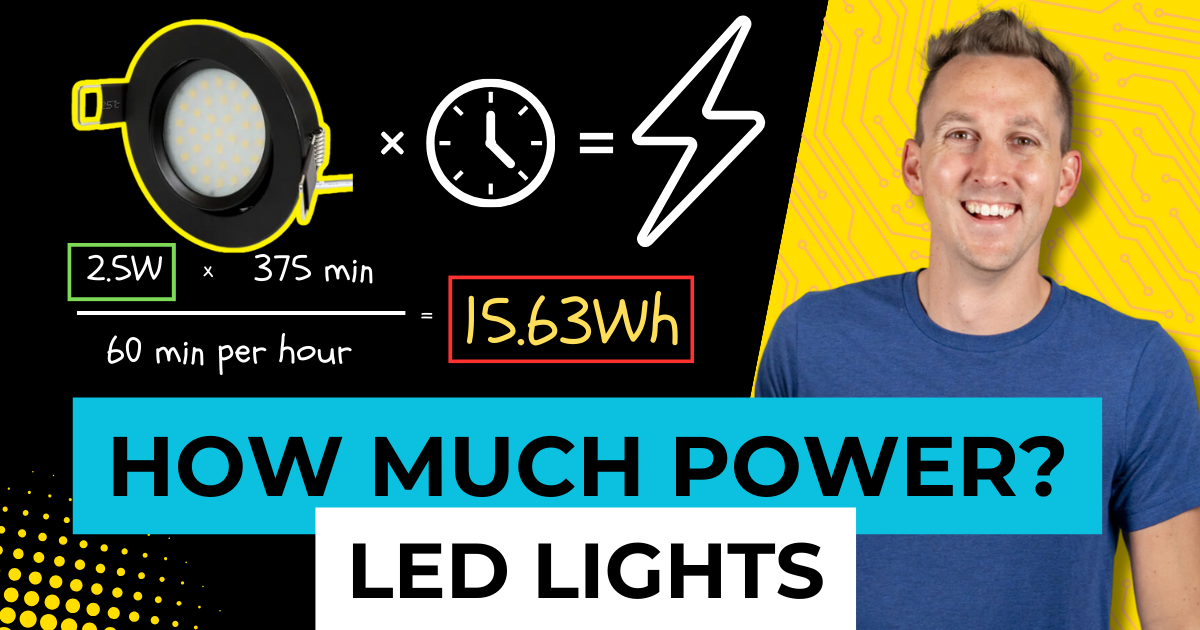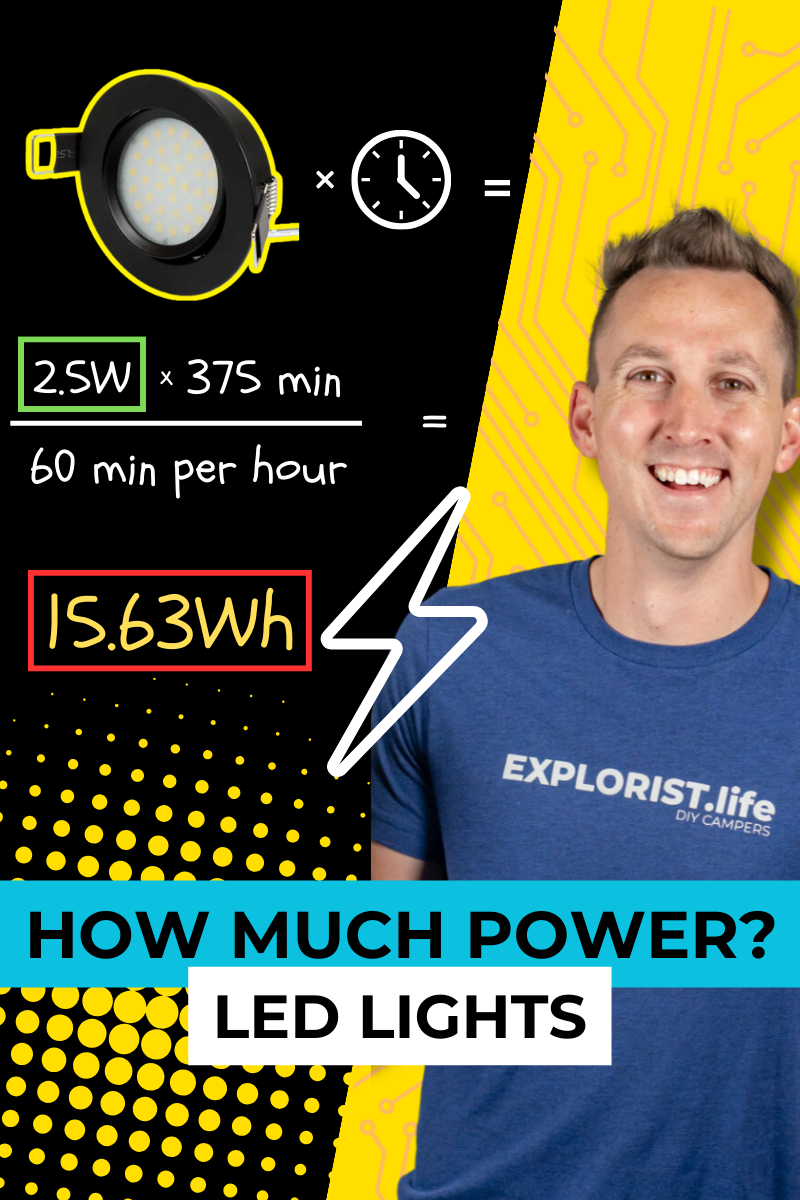LED lights are incredibly energy efficient, but if multiple of them are being used, they can still add up and should be accounted for when trying to size the batteries and solar in a mobile, marine, or off-grid electrical system, and that’s exactly what I’m going to teach you here in lesson #7 of this Electrical system sizing chapter of the EXPLORIST.life Mobile, Marine, and off-Grid Electrical Academy.
Now the methods of estimating power usage I’m going to teach you in this video will work for many different electrical devices, so if you keep an open mind and think critically, you’ll be able to apply this information to your own specific project.

Calculating Lighting Power Consumption VIDEO
How much power does an LED Light Use?
The formula for daily power consumption is: Watts x Minutes / 60 = Watt Hours
So the first thing we need is the wattage of the device.
The amount of power an LED light uses will depend on the type of light chosen, but its wattage will always be listed, which is what we need.
These 12V puck lights that we used in our van conversion are listed to use 2.5W each.

The next thing we need is to estimate how long we will use the lights.
If I wake up at 4:45 and the sun doesn’t come up until 7:00; where I’ll shut the lights off and open the windows; that’s 135 minutes of lighting usage. Then that evening, I keep the lights on for another 4 hours after the sun goes down; that’s an additional 240 minutes of usage for a total of 375 minutes per day.
Now we have everything we need:
2.5W for the lights x 375 minutes divided by 60 minutes per hour gives us 15.63 Watt Hours.

In the context of an off-grid battery bank, if this power were being drawn from a 12V battery, 15.63 watt-hours divided by 12V results in 1.3 amp hours, which is 1.3% of a 100Ah 12V battery for those 6 hours and 15 minutes of powering that single puck light.

How do you calculate the power consumption of MULTIPLE puck lights?
Calculating the power consumption of multiple puck lights is the same as a single light; except that you need to add all of the lights together since they will all be on at the same time.
So, if you had 10 puck lights on at the same time, Instead of 2.5W in the previous equations, you’d multiply the wattage of the lights x the number of lights which is 25W and then put that into the same equations from earlier, which results in 156.25 Watt Hours used.

How do you calculate the power consumption of strip lights?
Calculating the power consumption of LED strip lights is pretty similar to how we calculated the puck lights’ consumption. An entire 32 foot roll of these GoVee strip lights operates at 32 watts.
So, you could sub that into the equation from earlier which would give you 200 watt hours used.
Now, these strip lights are trimmable, which means that if you are running these around the base of a cabinet or something and not using the full roll, your lighting wattage will be lower.
For this, it’s safe to say that you could take the 32 watts for the whole roll, divide by 32 feet in the roll, which conveniently gives us 1 watt per foot.

Now this is pretty granular and I don’t know that many people will take the time to do it, but if you wanted to… well that’s how.
How do you calculate the power consumption of lights on dimmers?
A dimmer will indeed cause the lights to use less power, but to estimate power consumption and take into account that sometimes you may have the lights on at 30%, or sometimes at 50%, and sometimes at 70%; well the estimating just gets cumbersome and you’d need to find out how many watts the light draws at your desired dimness, and then do the same calculations from there and let’s be honest… nobody is going to do that.
Power audits like we are doing are a game of ‘close enough’ so just assume you are running your lights at 100% brightness all the time and you can rest assured that you’ll have enough battery capacity to run them at any brightness level you desire without running out of power.
Conclusion
Now you should have a good idea of how to calculate the power used by your lights in a mobile, marine, or off-grid electrical system.
We will refer to this lesson later in this academy when we discuss full power audits, so be sure to bookmark it for future reference and come back to it if you need a refresher.
In the next lesson, I’m going to teach you how to determine the power required for a 12V water pump.


